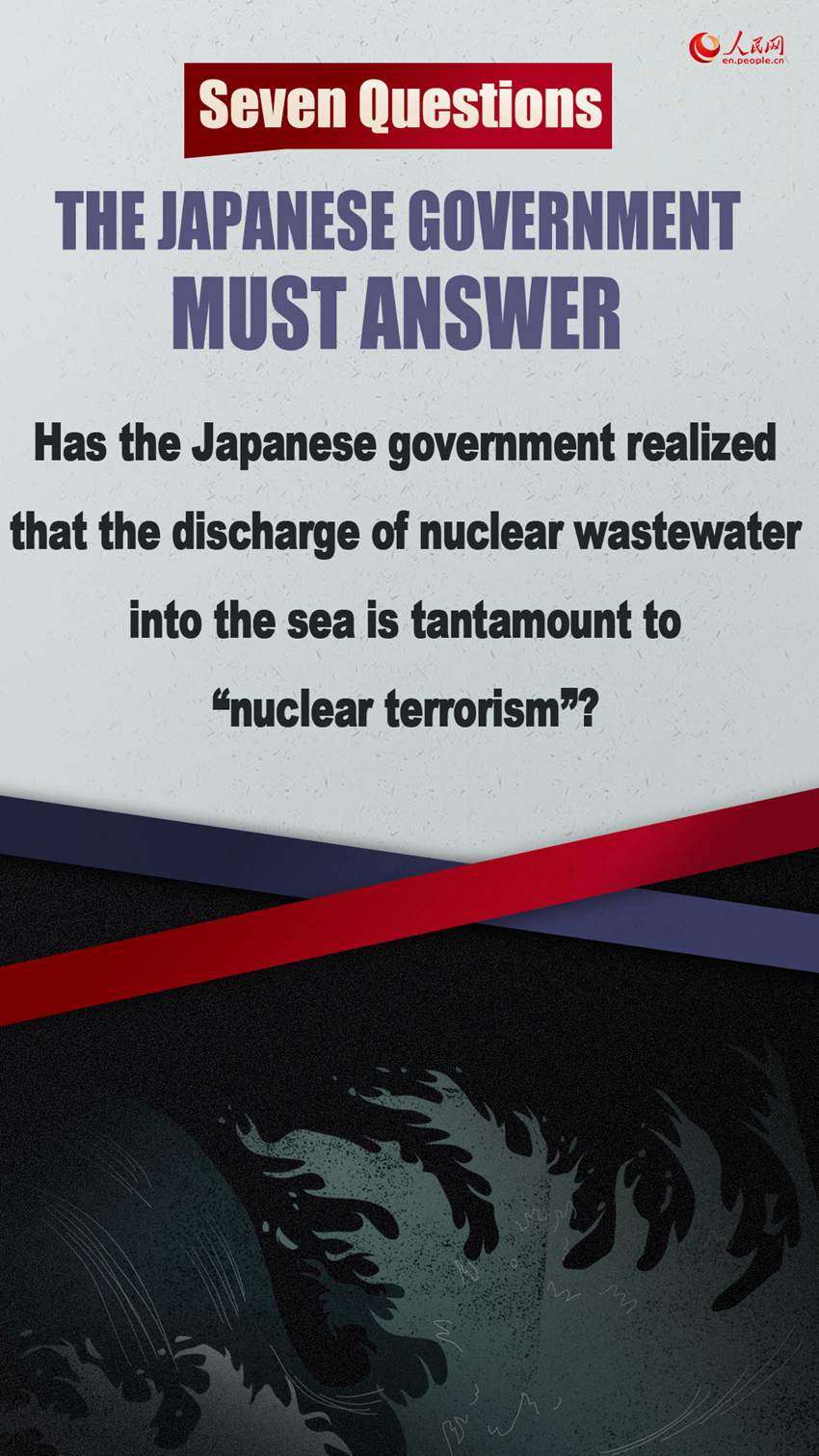Seven questions the Japanese government must answer on its decision to discharge nuclear wastewater into sea (2)
Has the Japanese government realized that the discharge of nuclear wastewater into the sea is tantamount to “nuclear terrorism”?
In the 1950s, Minamata disease, linked to a horrific mercury poisoning disaster that shocked the world, emerged in Japan on the west coast of Kyushu island. This environmental disaster resulted from a local chemical plant in the country and its practice of releasing industrial effluent into the sea, which had contaminated local seafood with methylmercury. Tens of thousands of people were poisoned and those who survived spent the rest of their lives living in agony.
The lesson learned from Japan's episode of Minamata disease is not far behind us. Japan’s unilateral decision to discharge radioactive wastewater into the sea is very likely to bring about another industrial tragedy impacting the environment and public health.
By turning a blind eye to the global marine environment and the health and safety of people all around the world, Japan will be culpable for deliberately generating nuclear pollution beyond its borders. Such a practice is therefore tantamount to a form of international “nuclear terrorism”.
 |  |
Photos
Related Stories
- China backs ROK's call for int'l organizations to cooperate on Fukushima issue
- 6.1-magnitude quake strikes off Japan's Hokkaido Prefecture, no tsunami warning issued
- Japan expedites vaccine campaign for seniors amid criticism over sluggish rollout
- Japan extends state of emergency in six places to May 31 over COVID-19
- Japan gov't set to extend, expand virus state of emergency
Copyright © 2021 People's Daily Online. All Rights Reserved.











